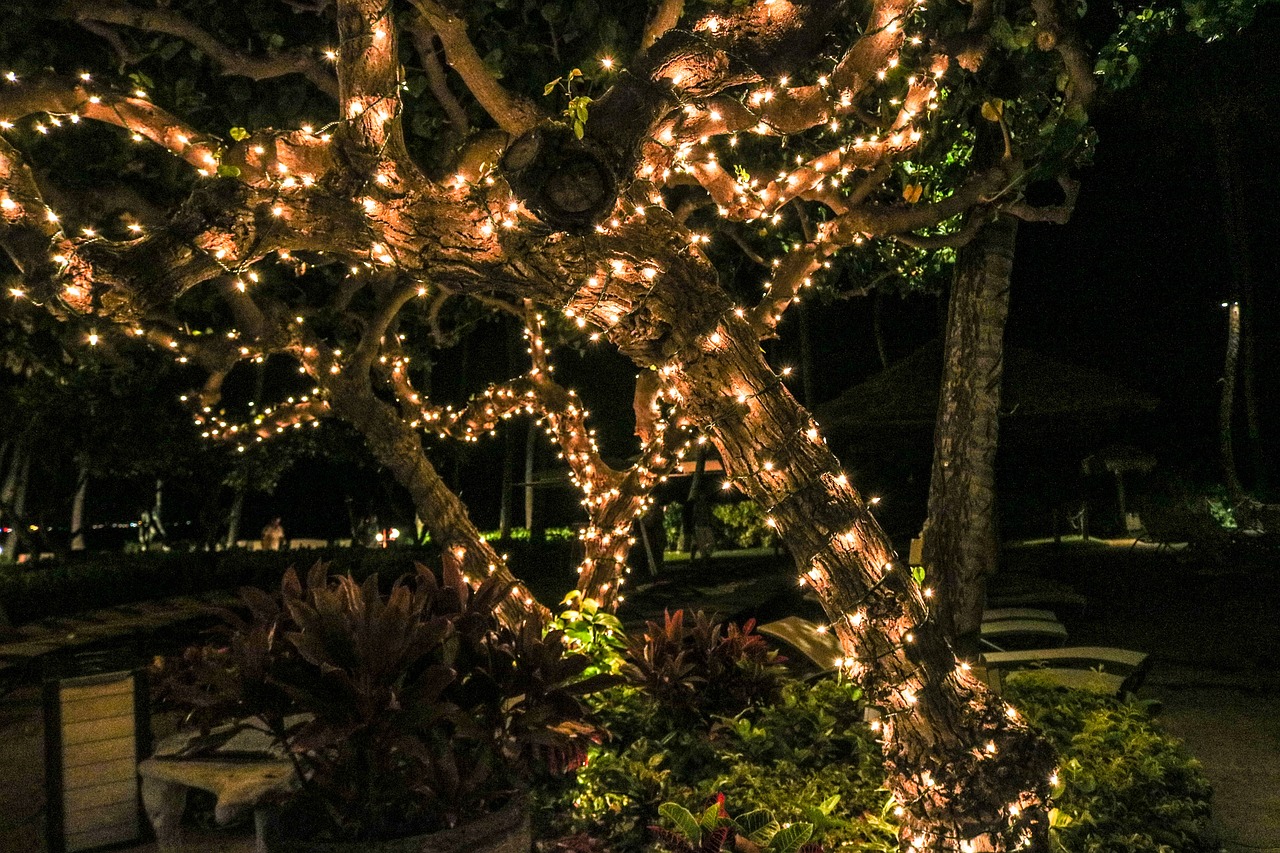There is a wide variety of garden lights to choose from, but to display them properly you should first understand basic lighting principles.
Functional garden lighting such as lighting a staircase or marking a path can enhance your evening garden experience and keep you safe when it’s dark outside. But lighting can also be used to highlight trees, sculptures or transform fountains into focal points in their own right.
Uplighting
Garden lighting should be subtle and low-intensity to prevent guests from being bothered by too much light, and creating harsh glares. Instead, highlight specific features of your garden at night with subtle garden lights; stone walls or tree trunks might look different when seen through shadowed branches and leaves in the dark than they do during daylight hours – creating something magical in your backyard at nighttime!
Uplighting is an engaging form of landscape lighting that illuminates objects in your yard from above. Use uplighting to showcase tree height and structure, architectural features of your home or hardscaping design elements or to highlight statues or fountains in your yard.
Solar and low-voltage lights offer several methods of uplighting, while installation of cables and transformers for low-voltage lights may provide greater flexibility in terms of brightness and positioning. If opting for low-voltage lights, please read your light set’s instruction manual carefully as each set may have specific requirements that need to be adhered to during setup – and be wary that installation might become messy depending on where your cables run.
Accent Lighting
Accent lights add a subtle yet beautiful effect to a garden when used alongside ground and path lighting, drawing attention to features like plants and water-features as well as drawing visitors in at an entranceway.
Start by carefully reading through your light set’s manual for specific instructions and warnings, before gathering all of the equipment needed, such as stakes, cables, connectors, transformers for low-voltage lights and any necessary tools. Dig shallow trenches for cable runs ensuring no existing underground pipes or foundations are in your way.
Once your cable runs are in place, the next step should be identifying lighting zones. Depending on your personal taste and amount of illumination needed, this could involve either lighting up entire areas or just one focal point – make sure you consider where these garden lights sit in relation to other features such as porches and fire pits!
Over-illuminating areas or objects will result in an unnatural light source and detract from the overall aesthetic of your garden. A few strategically-placed spotlights will prove more beneficial than an excessive number of fixtures.
Ground-Level Lighting
Garden lights provide the perfect ambience for entertaining or just simply unwinding in your outdoor spaces at night, whether for entertaining guests or relaxing alone. Strategic placement of lights also increases safety while expanding useability – there are various lighting techniques to consider such as uplighting, accent lighting and ground-level illumination when designing landscapes.
Uplighting decorative stone features, water fountains, and retaining walls is a great way to highlight their textures while drawing attention to their shapes and height variations. Furthermore, uplighting can highlight architectural columns from below for added drama and depth in a space.
Ground-level lighting can be an ideal way to accentuate tree trunks or shrubs while casting intricate shadow patterns on nearby foliage. Furthermore, it can highlight garden art such as statues or other forms in your yard.
As with any endeavor, lighting fixtures for your garden should be chosen with care and planned ahead of time. Too many fixtures can easily overpower their impact; to maximize results it’s wise to select only a few key spots in your garden for this type of illumination. It is also a good idea to walk through your garden at night with all lights lit to get an accurate impression of their appearance; this will enable you to identify dark spots which require illumination as well as any areas which might be over-lit and too bright.
Spike Lighting
Spike lighting can be an ideal way to illuminate garden features and plants in the evening when they aren’t at full bloom. Properly placed spike lights can provide an ambient wash of light around an object while simultaneously outlining its shape and casting shadows – Jo Mann suggests using different beam angles for more complex effects; uplighting trees from different directions creates one kind of wash of light while backlighting creates silhouettes from their silhouetted shapes.
One classic lantern-style choice offers soft lighting similar to natural illumination – perfect for highlighting plants, shrubs or water features in low lighting environments without overshadowing them.
Your options also include different wattages to meet your lighting needs and some models even allow you to control its intensity – great for areas of frequent usage or entertaining after dark.
Solar powered garden spike lights may help lower energy usage costs if that is what suits you best. They capture daylight during the daytime and store it to be used later at night when needed. This option may also work better in smaller gardens since sunlight will be stored until later when needed.
